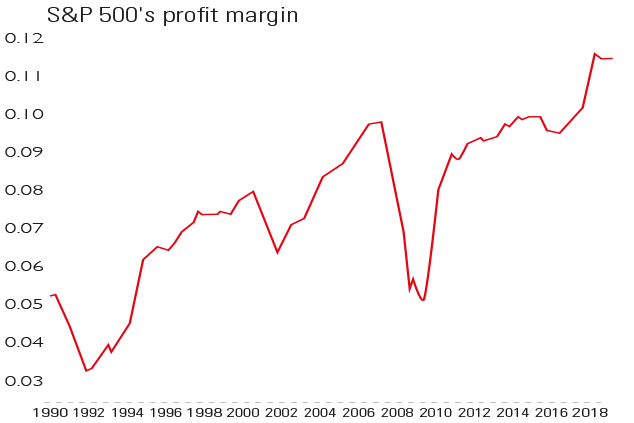
Profit margins are supposed to revert to the long-term average. In the US, however, they appear to be in a structural upswing. The chart depicts the overall profit margin of the 500 firms that comprise America’s blue-chip S&P 500 index: their total earnings divided by their total sales.
As Epsilon Theory’s Ben Hunt points out, $1 of sales produced around 3 cents in earnings a quarter of a century ago. Now a record 11 cents will reach the bottom line.
A key reason for this is an increase in pricing power amid a gradual decline in competition throughout the economy, with several industries now dominated by just a handful of players. Easy money and low interest rates keeping zombie companies alive have also hampered competition.
Viewpoint
“If you’re a bloke in a suit who’d like to apply for the governorship of the Bank of England (deadline 5 June)… You’ll probably already have read the job spec on the Cabinet Office website, which refers to candidates as ‘she/he’… you can be pretty sure Chancellor Philip Hammond has asked the headhunters to come up with a shortlist that’s at least 50-50… that’s a good thing: not only because the Bank has fallen behind the zeitgeist in largely failing to appoint or retain women in its top ranks throughout Mark Carney’s governorship, but also, as this column has argued ever since the 2008 crisis, because women often make better senior bankers than men, being less prone to machismo. So I’d say Ladbrokes has mispriced the female favourite, Santander UK chairman Baroness Vadera… at 8-1… Among the outsiders, I’m tempted by 33-1 on Christine Lagarde of the IMF.”
Martin Vander Weyer, The Spectator